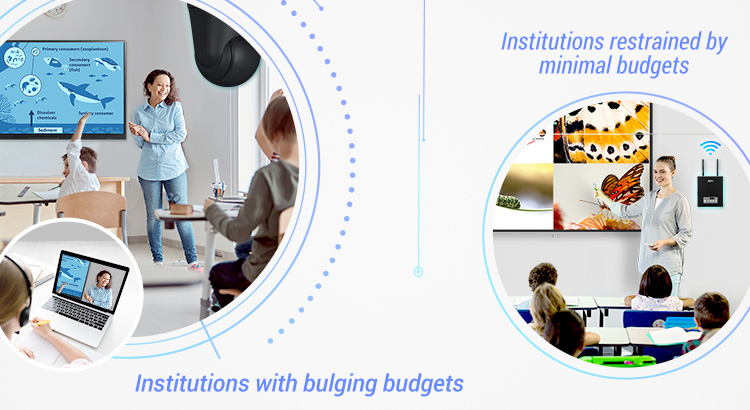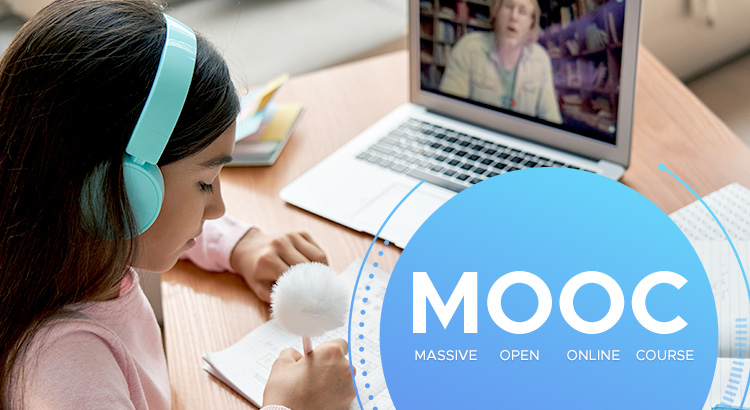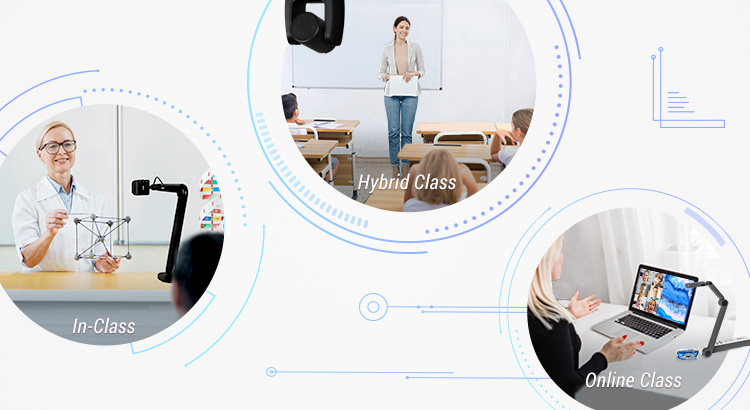After the upheaval of COVID-19 in 2020, the future of education is up in the air. Will the industry be dominated by distance learning? Will it include a hybrid mixture of in-class and online learning? Or will it just return to normal, with the bulk of students studying in brick-and-mortar spaces?
The answer may very well be yes to all of the above!
If we’ve learned anything during the past year, it’s that flexibility is essential to survival in the education world. That’s not going to change anytime soon.
Flexible Budgeting

First, schools will need to be flexible with their budgets.
When circumstances change, your funding could be cut, or it could increase—especially depending on your location. For example, a school in the US or Europe is likely to have a large amount of money allocated for high-tech capability, while a developing country may not have the infrastructure to support the most advanced devices, while pulling education funds to focus on building the economy.
Whatever your situation, there’s always a way to ensure your students have access to cutting-edge learning environments.
For those with bulging budgets and a strong infrastructure, there are AI-enabled auto tracking cameras combined with the latest visualizers (document cameras) and wireless environments that bring a truly in-class feeling to remote students in fully online or hybrid formats.
Institutions restrained by minimal budgets and subpar infrastructure can still keep pace. One of the best ways to do this is with an interactive control box. This innovative device creates a local network in the classroom, bringing wireless connectivity and cross-platform compatibility to existing outdated or limited classroom equipment.
Flexible Formatting

It’s also important that schools increase their flexibility for adapting to different learning style and paces.
Technology advances have made it possible to tailor education to individuals like never before. While every student must learn the same information, there’s zero need for them to learn it the same way and at the same speed.
We’ve extensively covered how technology and software help teachers accommodate every learning style before, covering all the major learning styles, including visual, verbal, aural, logical, physical, social, and solitary learners.
But you shouldn’t stop at learning styles. Schools must find ways to keep students who learn quickly engaged while they pull slower learners up to speed. Software solutions are especially helpful for this, giving teachers a multitude of options for giving self-learning assignments. Fast-paced students can work ahead, freeing up educators to work with those who are lagging behind.
Massive open online courses, or MOOCs, are also becoming perfect for reaching all styles. Auto tracking cameras enable instructors to move around and teach like they would if their students were in the room, making MOOCs more engaging than the text-driven courses they once were.
Flexible Teachers and Pedagogy

Schools must also ensure their teachers are ready for these technological changes.
Teachers must be trained to innovate, finding the latest apps and devices that will best suit their students’ needs. There is no longer room for educators who skate by with boring lectures or complete reliance on textbooks. These things can and should be heavily supplemented with interactive audiovisual content.
Teachers must also be flexible in terms of format. They must be able to quickly move from in-class to online teaching. They must always be ready to welcome students learning from home into hybrid classes without watering down content.
If your school isn’t quite ready for the future, don’t panic. The education technology is booming, and new solutions are constantly being developed. Find all the devices you need and open a direct line of communication with the experts who can help you implement your new technology by clicking the button below!